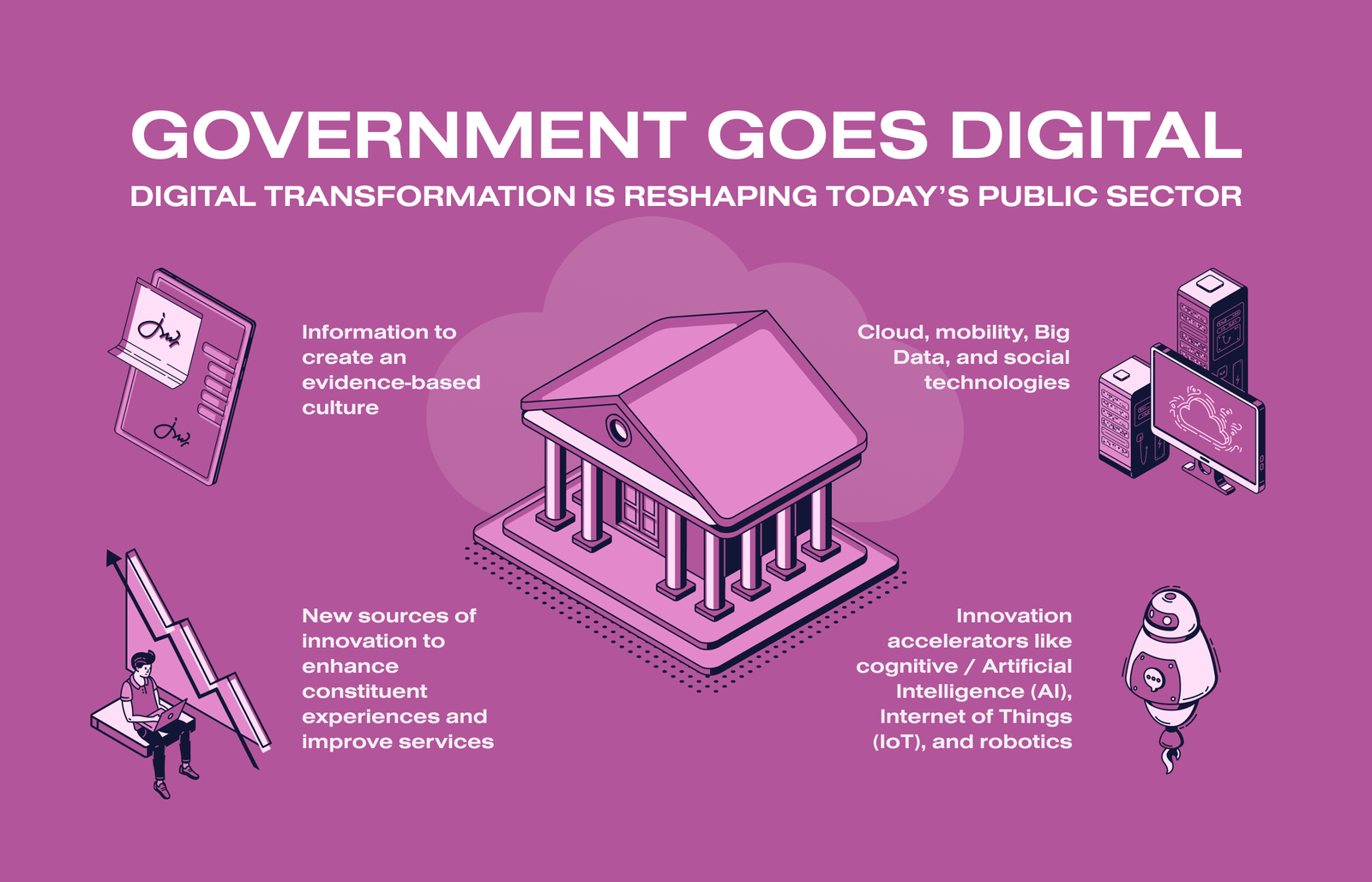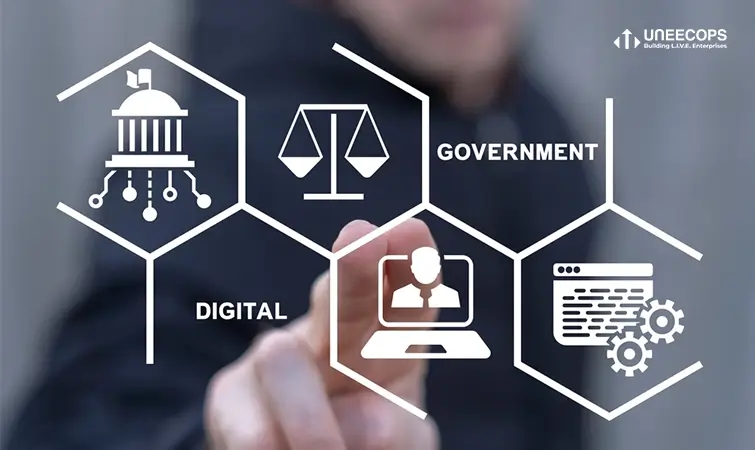Now Reading: E-Government Initiatives in Tax Administration: Unlocking Seamless Success
-
01
E-Government Initiatives in Tax Administration: Unlocking Seamless Success
E-Government Initiatives in Tax Administration: Unlocking Seamless Success

Table of Contents
E-Government initiatives in tax administration represent a pivotal shift from traditional, paper-based systems to digitally-driven platforms, fundamentally reshaping how tax authorities interact with taxpayers. This pervasive transformation, increasingly mandated by evolving global standards and technological advancements, aims to enhance efficiency, foster transparency, improve compliance, and ultimately elevate taxpayer satisfaction. As of May 2025, tax agencies worldwide are recognizing that robust e-government frameworks are not just an advantage but a necessity for effective and equitable revenue collection in the modern digital economy.

Defining E-Government in Tax Administration
E-Government in the context of tax administration refers to the use of Information and Communication Technologies (ICTs) by tax authorities to deliver services, exchange information, and manage internal processes. It encompasses a wide array of digital tools and strategies designed to streamline tax-related activities for both government and citizens. This transformation moves beyond simply digitizing existing forms; it involves re-engineering processes to leverage technology for greater effectiveness, accuracy, and accessibility.
The overarching goals of these initiatives are multi-faceted:
- Enhanced Efficiency: Automating routine tasks, reducing processing times, and minimizing manual errors.
- Increased Transparency and Accountability: Providing clear audit trails, reducing opportunities for corruption, and making tax processes more understandable.
- Improved Taxpayer Compliance: Simplifying filing and payment, offering clear guidance, and making it easier for taxpayers to meet their obligations.
- Better Service Delivery: Offering convenient, 24/7 access to services, personalized support, and quicker response times.
- Strengthened Revenue Assurance: More effective detection of fraud and evasion through data analysis, leading to a higher tax collection rate.
- Data-Driven Policy Making: Utilizing rich datasets for informed fiscal policy formulation and economic analysis.
Key Components and Enabling Technologies

The implementation of e-government in tax administration relies on a diverse set of integrated components and cutting-edge technologies:
- Online Tax Portals and Websites: Centralized digital platforms serving as a single point of access for taxpayers to register, access information, file returns, make payments, and manage their tax accounts.
- Electronic Filing (E-filing): Allows taxpayers to submit tax returns and related documents digitally, often with built-in validation checks to reduce errors. This has largely replaced paper-based submissions in many developed and developing economies.
- Electronic Payments (E-payments): Facilitates secure and convenient online tax payments through various digital channels, including bank transfers, credit/debit cards, and mobile payment gateways.
- Data Analytics and Big Data: Crucial for processing and analyzing vast volumes of tax-related data (including third-party data from banks, employers, e-commerce platforms). This enables predictive modeling for compliance risk assessment, fraud detection, and revenue forecasting.
- Artificial Intelligence (AI) and Machine Learning (ML): Increasingly deployed for:
- Risk Profiling: Identifying high-risk taxpayers for targeted audits based on behavioral patterns and anomalies.
- Automated Query Resolution: AI-powered chatbots and virtual assistants providing instant, accurate answers to common taxpayer questions.
- Fraud Detection: ML algorithms detecting complex patterns indicative of tax evasion that might be missed by human review.
- Personalized Services: Tailoring guidance and reminders based on individual taxpayer profiles.
- Mobile Applications: Dedicated apps for smartphones and tablets providing on-the-go access to tax services, making compliance more accessible, especially in regions with high mobile penetration.
- Robotic Process Automation (RPA): Automating repetitive, rule-based administrative tasks such as data entry, reconciliation of payments, and generating standard notifications, freeing human resources for more complex activities.
- Single Window Systems: Integrating various government services, including tax, business registration, and customs, into a unified platform to simplify administrative procedures for businesses and citizens.
- Electronic Invoicing (E-invoicing) and Real-time Reporting (RTR): Mandating businesses to issue and transmit invoices electronically to the tax authority in near real-time, providing immediate visibility into economic activity and significantly enhancing VAT/GST compliance and fraud detection. This is a major global trend.
- Cloud Computing: Provides scalable, secure, and resilient infrastructure for hosting national tax systems, reducing hardware costs and enabling rapid deployment of new services.
Profound Benefits for Stakeholders
The advantages of robust e-government initiatives in tax administration are transformative for both government and taxpayers:
- For Tax Administrations:
- Operational Efficiency: Automation of routine tasks drastically reduces processing times and administrative burdens, leading to cost savings and higher productivity.
- Improved Compliance: Easier compliance mechanisms encourage voluntary compliance. Real-time data and advanced analytics enable more precise targeting of non-compliance, leading to a narrower “tax gap.”
- Enhanced Revenue Collection: Efficient fraud detection and streamlined collection processes ensure more timely and complete revenue inflows.
- Better Resource Allocation: Freed from manual tasks, tax officers can focus on complex cases, strategic planning, and taxpayer education.
- Data-Driven Insights: Access to comprehensive, real-time data allows for more informed policy decisions, economic modeling, and responsiveness to market changes.
- Increased Transparency: Digital records create an immutable audit trail, reducing opportunities for corruption and fostering public trust.
- For Taxpayers:
- Simplified Compliance: Intuitive online interfaces, pre-filled returns, and automated calculations make filing easier and less prone to errors.
- Reduced Compliance Costs: Less time spent on manual paperwork, reduced need for professional intermediaries, and fewer errors lead to direct cost savings.
- Convenience and Accessibility: 24/7 access to services from any location with internet connectivity, empowering taxpayers to manage their affairs on their own schedule.
- Faster Processing: Quicker processing of returns and refunds.
- Enhanced Service Quality: Access to information, personalized support, and quicker resolution of queries.
- Greater Transparency: Ability to track filing and payment statuses in real-time, improving trust in the tax system.
Challenges and Mitigating Strategies

Despite the clear advantages, implementing comprehensive e-government initiatives presents notable challenges:
- Digital Divide: Disparities in internet access, digital literacy, and access to necessary devices (computers, smartphones) can exclude certain segments of the population, particularly in rural areas or among older demographics. Mitigation: Provide assisted e-filing centers, public access points, digital literacy training programs, and maintain alternative channels for those unable to use digital services.
- Cybersecurity and Data Privacy: Handling vast amounts of sensitive financial data electronically makes tax administrations prime targets for cyberattacks. Protecting this data and complying with stringent privacy regulations (like GDPR) is paramount. Mitigation: Implement multi-layered security protocols, robust encryption, regular vulnerability assessments, and strict access controls. Adhere to global data protection standards.
- Legacy Systems Integration: Many tax administrations have outdated IT infrastructures. Integrating new, cutting-edge digital solutions with these legacy systems can be technically complex, time-consuming, and expensive. Mitigation: Adopt modular architectures, use APIs for seamless data exchange, and plan for phased modernization rather than a complete overhaul.
- Change Management and Skill Gaps: Resistance to change from both internal staff (who may fear job displacement or lack skills) and some taxpayers can hinder adoption. A lack of digitally skilled personnel within tax authorities is also a significant hurdle. Mitigation: Invest in extensive training and re-skilling programs for tax officials, clearly communicate benefits to staff and taxpayers, and foster a culture of continuous learning and innovation.
- Regulatory and Legal Frameworks: Existing tax laws may not be equipped for digital processes, real-time reporting, or the legal validity of smart contracts. Mitigation: Proactive legislative reforms are needed to align tax laws with digital realities and ensure the legal enforceability of electronic transactions.
- Interoperability: Ensuring seamless data exchange and collaboration between different government agencies (e.g., tax, customs, social security, business registries) is crucial for a holistic e-government experience. Mitigation: Develop common data standards and protocols, and implement integrated government platforms.
- Cost of Implementation: The initial investment in technology, infrastructure, and human capital for large-scale e-government projects can be substantial. Mitigation: Seek international funding, consider public-private partnerships, and prioritize phased implementation to manage costs.
Global Examples and Future Outlook (2025-2026)
Many countries have achieved significant milestones in e-government in tax administration:
- Estonia: Often cited as a pioneer, Estonia offers almost all public services online, including tax. Its e-Tax Board allows citizens to file tax returns in minutes, pre-filled with data, with high rates of online filing and high taxpayer trust.
- Singapore: Known for its user-centric design, providing personalized digital services, including pre-filled income tax returns and mobile apps for easy filing and payments.
- South Korea: Features advanced digital platforms for tax collection and enforcement, leveraging AI and big data for risk assessment and fraud detection.
- India: The Goods and Services Tax Network (GSTN) is a massive digital infrastructure handling millions of transactions monthly, enabling real-time invoice matching and input tax credit validation. The Income Tax Department also leverages e-filing, e-assessments, and data analytics.
- Brazil and Mexico: Early adopters of mandatory electronic invoicing (e.g., Nota Fiscal Eletrônica in Brazil, CFDI in Mexico), which has significantly improved VAT compliance and reduced fraud by providing real-time transaction visibility.
- European Union: The “VAT in the Digital Age” (ViDA) proposals aim to standardize real-time reporting for intra-EU transactions by 2026, marking a significant step towards a more integrated and digitalized VAT system across member states.
Looking ahead to 2025 and 2026, several trends will shape the future of e-government in tax:
- Ubiquitous Real-time Reporting: More countries will adopt mandatory e-invoicing and real-time transaction reporting systems, moving towards continuous transaction control (CTC) to gain immediate visibility into economic activity.
- Deeper AI and Predictive Analytics Integration: AI will become even more sophisticated in proactive risk management, predictive compliance, and hyper-personalized taxpayer services, potentially leading to “tax-by-design” or “invisible tax” where compliance is seamlessly embedded in daily digital transactions.
- Increased Focus on Digital Public Infrastructure (DPI): Nations will increasingly leverage foundational digital identities, digital payment systems, and secure data exchange platforms (DPI) to create integrated and seamless e-government services, with tax administration being a key beneficiary.
- Enhanced Cybersecurity Measures: As tax systems become more digital, investments in advanced cybersecurity, including AI-driven threat detection and privacy-enhancing technologies (PETs) like federated learning and homomorphic encryption, will be paramount.
- Global Collaboration on Digital Tax Rules: International bodies like the OECD and UN will continue to push for harmonized digital tax rules and standardized digital information exchange, particularly for cross-border digital services and crypto assets.
- Sustainable and Green IT: Tax administrations will increasingly consider the environmental footprint of their data centers and digital operations, opting for energy-efficient cloud solutions and green IT practices.
CONCLUSION
In essence, e-government initiatives are driving a fundamental transformation in tax administration, moving it from a bureaucratic necessity to a modern, efficient, and user-friendly public service that underpins fiscal stability and economic growth in the digital age.
WATCH MORE: https://www.youtube.com/watch?v=p-BQndfFvsQ
READ MORE: Digital Transformation of Tax Services: Driving Remarkable Progress






















